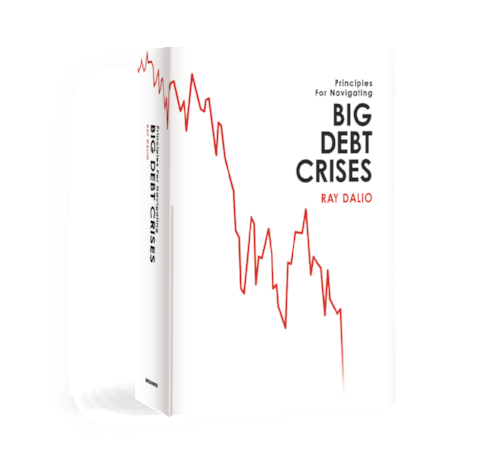
Ray Dalio: Principles for Navigating Big Debt Crises
A Template for Understanding Big Debt Crises by Ray Dalio – Bestselling Author in Economics & Investment

Ray Dalio is perhaps the most successful investor in History and he made more money to people than any other Hedge fund.
Ray published his first official book last year in 2017 called Principles Work and Life, which is the first book of two, and the second book that hasn’t been published yet about the Economic & Investment principles.
Summary
This short book A Template for Understanding Big Debt Crises is in a form of written examples, templates, and graphs that Ray has gathered over his life, wanting to truly understand how the global economy and markets Really work.
By studying the historical data, Ray found out that the similar anomalies and crisis happened many times throughout history, and that there always are identical occurrences in each case being another one of those.
Ray talks about three main debt cycles that occurred many times in the history which are:
- Archetypal Big Debt Cycle
- Classic Deflationary Debt Cycle
- Classic Inflationary Debt Cycle
While the book doesn’t go deep into Bridgewater’s detailed decision-making processes and systems, this is what anyone can expect to find in this study:
1) Ray’s template for the Archetypal Big Debt Cycle
2) Three Iconic Case Studies examined in detail (the US in 2007–2011, which includes the Great Recession, the US in 1928–1937, which covers a deflationary depression, and Germany in 1918–1924, which examines an inflationary depression)
3) a “Compendium of 48 Case Studies,” which includes most of the big debt crises that happened over the last 100 years.*
Ray says that he guarantees that if you take the time to get to understand to each one of these three perspective views than you will start seeing these big debt economic crises very different than you did before.
Here is Ray Dalio’s Interpretation of Understanding the Economy and Markets
“To me, watching the economy and markets, or just about anything else, on a day-to-day basis is like being in an evolving snowstorm with millions of bits and pieces of information coming at me that I have to synthesize and react to well.
To see what I mean by being in the blizzard versus seeing what’s happening in more synthesized ways, compare what’s conveyed in Part 1 (the most synthesized/template version) with Part 2 (the most granular version), and Part 3 (the version that shows the 48 cases in chart form).
If you do that, you will note how all of these cases transpire in essentially the same way as described in the archetypal case while also noting their differences, which will prompt you to ponder why these differences exist and how to explain them, which will advance your understanding. That way, when the next crisis comes along, you will be better prepared to deal with it.
To be clear, I appreciate that different people have different perspectives, that mine is just one, and that by putting our perspectives out there for debate we can all advance our understandings. I am sharing this study to do just that.”
The Big Debt Crises book is just about 60 pages long but it contains all the important info and data to create a good picture of what causes the economic debt crises and how to prepare and be safe when another one of those will come!


